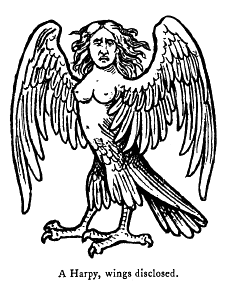Tulevieja on:
[Wikipedia]
[Google]
[Amazon]
La Tulevieja (also spelled Tulivieja), is a legendary figure from
 In the legend, a beautiful girl had a secret relationship with a man from her town, resulting in pregnancy. She drowned the child in a river, and was punished by God transforming her into a hideous creature (in some versions she drowns herself as well). She is a short woman with a thick body, swollen breasts, sometimes leaking milk, and tangled hair. She is often described with bird or bat wings, similar to a
In the legend, a beautiful girl had a secret relationship with a man from her town, resulting in pregnancy. She drowned the child in a river, and was punished by God transforming her into a hideous creature (in some versions she drowns herself as well). She is a short woman with a thick body, swollen breasts, sometimes leaking milk, and tangled hair. She is often described with bird or bat wings, similar to a
Costa Rican
Costa Rica (, ; ; literally "Rich Coast"), officially the Republic of Costa Rica ( es, República de Costa Rica), is a country in the Central American region of North America, bordered by Nicaragua to the north, the Caribbean Sea to the no ...
and Panamanian
Panamanians (Spanish: ''Panameños'') are people identified with Panama, a transcontinental country in Central America (a region within North America) and South America, whose connection may be residential, legal, historical, or cultural. For mo ...
folklore. She is a ghost who wears a distinctive hat called a ''tule''.
Legend
harpy
In Greek mythology and Roman mythology, a harpy (plural harpies, , ; lat, harpȳia) is a half-human and half-bird personification of storm winds. They feature in Homeric poems.
Descriptions
They were generally depicted as birds with the hea ...
, and with inverted legs of a bird of prey. Swarms of ants often follow her, drinking milk that falls to the ground.
La Tulevieja has been syncretized with La Llorona
''La Llorona'' (; "The Weeping Woman" or "The Wailer") is a Hispanic-American mythical vengeful ghost who is said to roam near bodies of water mourning her children whom she drowned.
Origins
Early colonial times provided evidence that the lore ...
in some places, and in those versions of the legend she seeks out babies to feed her milk to, sometimes stealing them. In some interpretations, she is an avenging spirit, punishing lustful men and irresponsible fathers. The only way to escape her clutches is to recite a certain prayer.
The legend has its roots in Talamancan mythology
Talamancan mythology includes the traditional beliefs of the Bribri and Cabécar peoples, two groups of indigenous peoples in Costa Rica living in the Talamanca region. These peoples speak two different but closely related languages, and from a ...
, in Itsö, a spirit of mountains, wind, and rain (though the name can also be used generically to refer to any demon). Itsö demanded the right to eat the first human beings due to help he gave the god Sibú
Sibú is the primary deity in the Talamancan mythology of Costa Rica. He is the creator of Earth and humanity, god of wisdom, values, and indigenous customs. He is called Sibú by the Bribri and Cabécar, Sibö by the Teribe, and Zipoh by the ...
.
The name Tulevieja comes from the ''tule'' hat she wears, and in some versions of the story, the plant is a defense against her. ''Tule'' can refer to several plants, including ''Schoenoplectus acutus
''Schoenoplectus acutus'' ( syn. ''Scirpus acutus, Schoenoplectus lacustris, Scirpus lacustris'' subsp. ''acutus''), called tule , common tule, hardstem tule, tule rush, hardstem bulrush, or viscid bulrush, is a giant species of sedge in the pl ...
'', ''Taxodium mucronatum
''Taxodium mucronatum'', commonly known as Montezuma bald cypress, Montezuma cypress, or ahuehuete, is a species of ''Taxodium'' that is primarily native to Mexico and Guatemala, with a few populations in the southwestern United States. Ahuehuet ...
'', and ''Pontederia
''Pontederia'' is a genus of tristylous aquatic plants, members of which are commonly known as pickerel weeds. ''Pontederia'' is endemic to the Americas, distributed from Canada to Argentina, where it is found in shallow water or on mud. The genu ...
''.
In the mythology of the Ngäbe-Buglé, she is called Tepesa.
References
{{Reflist Costa Rican folklore Female legendary creatures North American ghosts